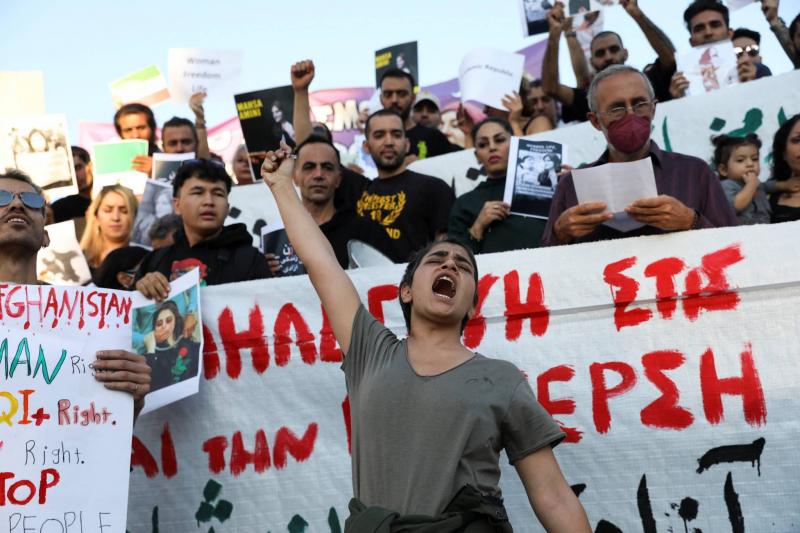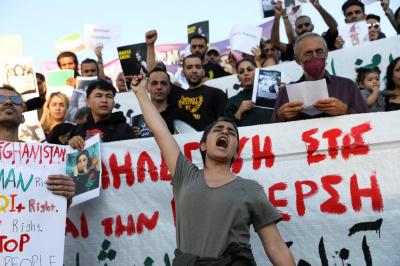On International Women's Day, The Guardian chose to shed light on the plight of Iranian girls, particularly following the poisoning incident affecting around a thousand students exposed to a "mild poison." In a lengthy investigation, the article traces the true causes behind these incidents since November, when the first cases emerged in Qom, according to government media and officials. While observers have categorized the suspected attacks as part of a radical response—possibly with implicit state support—to the protests led by women and girls that have shaken Iran since the death of Mahsa Amini in September, there is a hypothesis that some cases may indicate a collective social illness—symptoms with no clear biological medical cause—stemming from the repression of schoolgirls who played a leading role in that movement.
The Guardian begins with statistics showing that female literacy in Iran rose from 26% in 1976 to 85% in 2021 after the Islamic Revolution, with more women than men in universities according to World Bank statistics. However, there has been a shift in public policy since women entered the opposition and protests, including incidents involving Iranian activists who were killed under torture.
The newspaper asks, "What is causing these incidents?" speculating that "the answer is complicated given the severe restrictions on press freedom in Iran, with journalists facing challenges in investigating the circumstances of the events—and there is no direct evidence of responsibility. But it may be possible to piece together some details."
According to human rights journalist and activist Diba Barnett, who is covering the story for The Guardian, "the attacks are not complicated at all." She mentions that "one doctor told me that based on the symptoms they observed, it is likely that the substance used to poison the girls is an organic phosphate widely used in agriculture as a pesticide." The doctor clarified, "The only people I have treated in the past with similar symptoms worked in agricultural or military environments."
In an attempt to narrow down potential responsibility, some have looked at the fact that the first incidents occurred in Qom, a highly religious city located 80 miles from Tehran. Barnett states, "While the education of girls is widely accepted, there are extremist Islamists who oppose it." She highlights claims that at least some cases may result from a "collective social illness" where symptoms spread without a clear biological medical cause. Proponents of this argument point to the harsh repression of protesters in Iran as a possible cause.
A review of blood tests conducted on some schoolgirls showed no evidence of toxins, according to reports from the BBC, while The Wall Street Journal mentioned that "in a video circulated on social media last week, a classroom appeared to suffer from symptoms after a girl with asthma faced difficulty breathing, leading a teacher to wonder if the students had inhaled something." Witnesses in some cases reported seeing suspicious things thrown in schoolyards. In this context, chemical weapons expert Dan Kaszeta from the Royal United Services Institute explained that toxins can break down quickly, making it extremely difficult to draw definitive conclusions.
Why might girls be targeted? Barnett answers, "After Mahsa's death, university students were the ones who mostly took to the streets." However, shortly afterward, reports emerged of three teenage girls dying from head injuries: Setar Tajik, Sarina Ismailzadeh, and Nika Shakarami. These deaths completely changed the situation, leading to the emergence of images of teenage girls showing their middle fingers in a protest gathering, burning a picture of Ayatollah Khamenei—starting this in classrooms, and later joining protests in the streets.
While it is likely that extremists are exploiting the heated political situation to act on their long-standing anti-women views regarding women's education, the incidents are widely seen as a result of recent events. Barnett asserts, "No one believes it is a coincidence that these cases followed the protests." She adds, "What you hear from activists and protest networks is that this is revenge against these girls and their families."
How has the Iranian government responded? Barnett conveys parents' perspectives that after months of government neglect towards the incidents, the recent sharp rise in cases seems to have forced authorities to issue a statement, with the Supreme Leader Ali Khamenei publicly addressing the issue for the first time, saying that if the incidents were intentional, the perpetrators should be sentenced to death for committing an "unforgivable crime."
Barnett connects the current situation to a recent Human Rights Watch report noting that "Iranian authorities have a horrific track record regarding investigations into violence against women and girls," citing the 2014 example of acid attacks on women in Isfahan, which resulted in no arrests or prosecutions.
What does all this mean for the future of the protest movement? Barnett concludes her report: "Regardless of the complexity in assessing the reasons, the series of incidents comes at a tumultuous moment. While there has been a period of relative calm in protests recently—perhaps due to the sharp increase in executions—the incidents in girls' schools have sparked a new sense of anger. Protesters tell me they cannot allow this to happen to young girls, and coinciding with the observance of International Women's Day, new protests are being planned in acknowledgment of the struggles many are facing on both feminist and life fronts."




